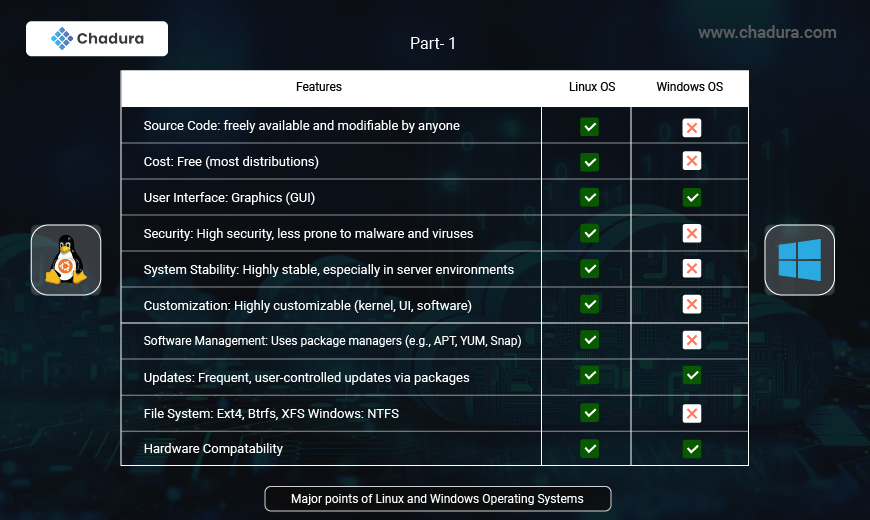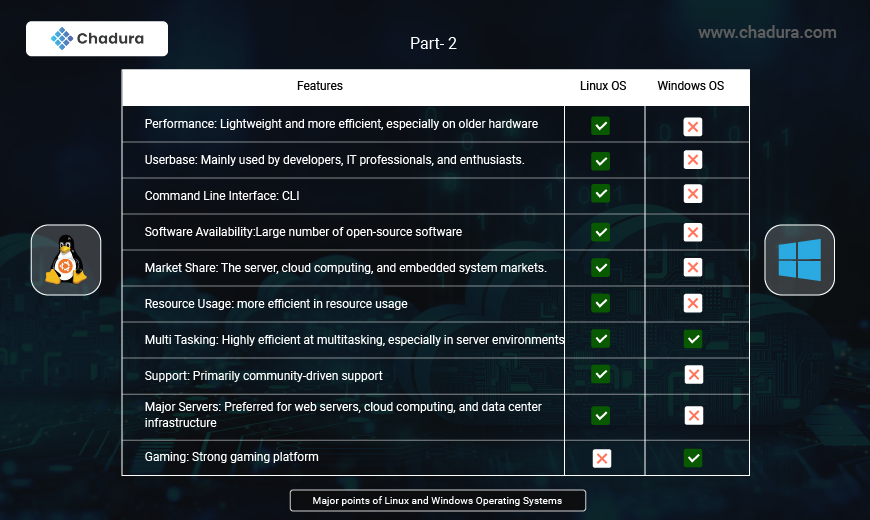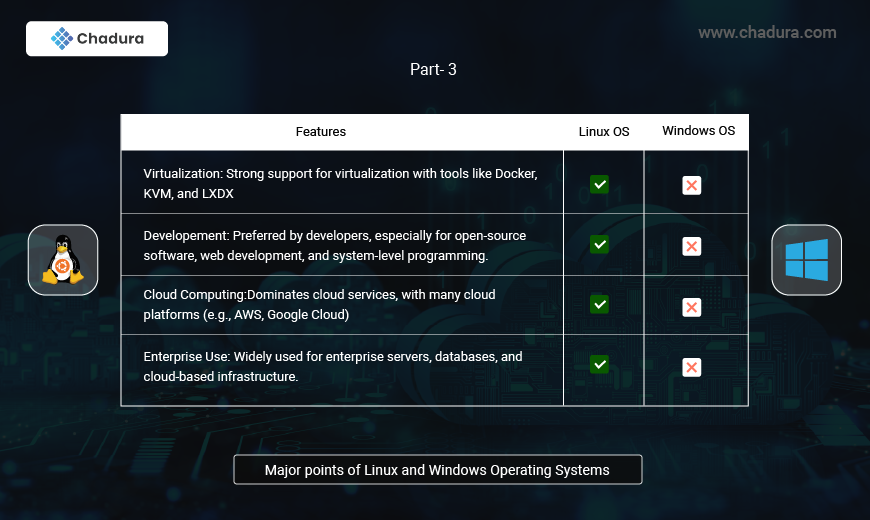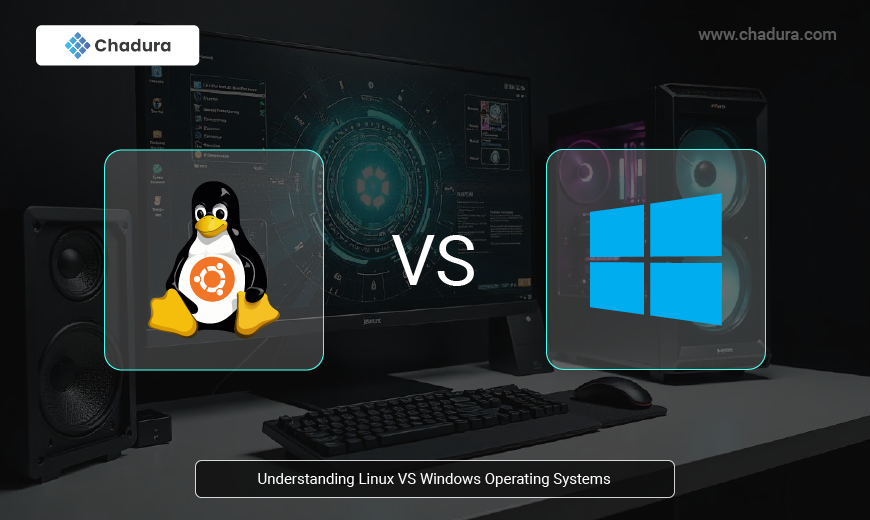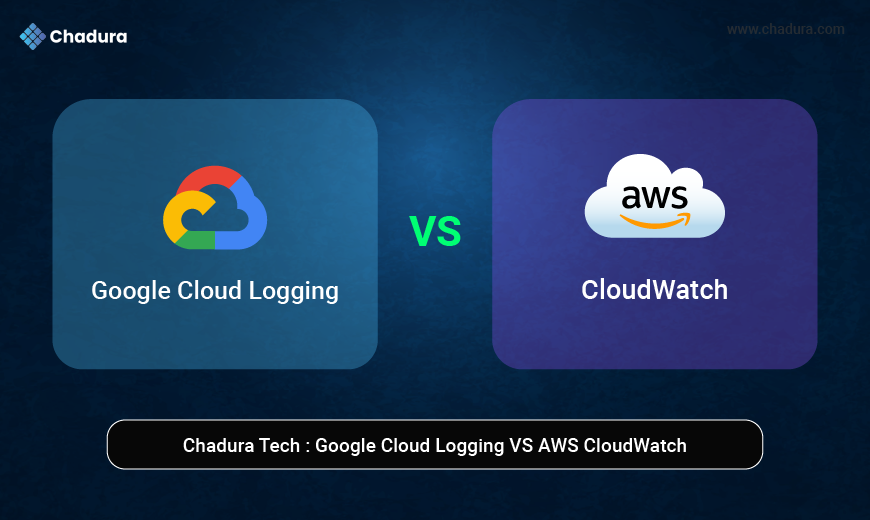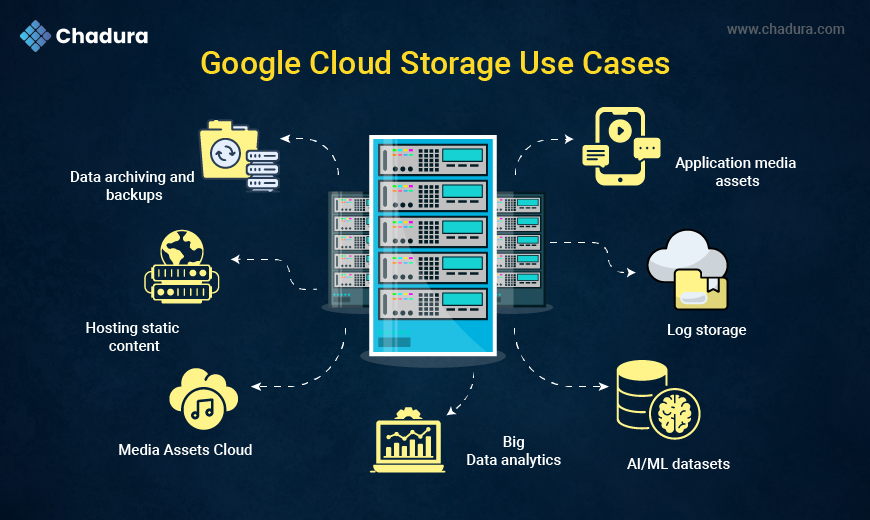Linux is an open-source operating system known for its stability, security, and customizability. Unlike proprietary systems, Linux allows users to view and modify its source code. It is widely used in server environments due to its efficiency and minimal resource usage. Linux offers various distributions, such as Ubuntu, Debian, and Fedora, each tailored to different user needs. While Linux may require more technical knowledge, especially for installation and system management, it provides greater control over hardware, software, and security. It is less prone to malware and is widely supported by a vibrant community.
The Linux operating system was created by Linus Torvalds in 1991. Initially, it started as a personal project to develop a free and open-source alternative to the proprietary Minix operating system used in academic environments. Linus released the first version, Linux 0.01, in September 1991. The project rapidly grew as other developers around the world contributed to its development, making it a community-driven, open-source platform.
Microsoft Windows Operating System
The Windows operating system has a rich history, beginning with its introduction in 1985 as a graphical extension to MS-DOS. Over the years, Windows has evolved significantly, from early versions like Windows 3.1 to the modern Windows 11. Key milestones include the introduction of the Start button in Windows 95, the shift to the NT kernel in Windows NT, and the touch-centric interface of Windows 8 and 10. Windows has consistently aimed to provide a user-friendly experience while adapting to changing technological landscapes.
Windows is a family of operating systems developed and marketed by Microsoft. It encompasses a wide range of software, from the flagship Microsoft Windows NT to the discontinued MS-DOS and Windows 9x families. The most recent client version of Windows is Windows 11, while Windows Server 2022 is the latest server version. Windows holds a dominant position in the OS market, particularly for personal computers. It features a graphical user interface (GUI) that allows users to interact with the system through icons, menus, and windows. Windows supports a vast ecosystem of software applications, making it a versatile platform for various tasks, from everyday computing to gaming and professional software development.
Architecture Of Linux
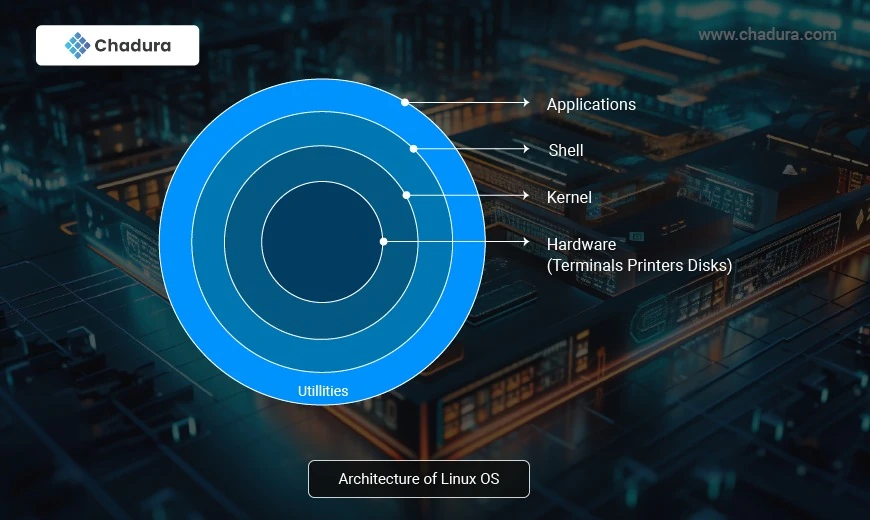
The architecture of Linux can be conceptualized in several layers, each playing a crucial role in the functioning of the operating system.
Hardware Layer: The hardware layer consists of the physical components of a computer, including the central processing unit (CPU), memory (RAM), storage devices (hard drives, SSDs), input/output devices (keyboard, mouse, display), and other peripherals.
Kernel : The kernel is the core of the Linux operating system. It directly interacts with the hardware and manages its resources. Key responsibilities of the kernel include process scheduling, memory management, device drivers, file system management, and system calls. The Linux kernel is modular, allowing the addition or removal of features through loadable kernel modules.
Shell and Command Line Interface (CLI): This is a command-line interpreter that acts as an interface between the user and the kernel. It allows users to interact with the operating system by entering . Linux supports various shells, with being one of the most widely used. The CLI provides powerful tools for , process control, and system configuration.
System Libraries: System libraries are collections of functions and routines that provide essential services to applications and the kernel. They act as an intermediary between application software and the kernel version. Common libraries include the GNU C Library (glibc) and other libraries specific to programming languages.
System Calls: System calls are interfaces between user-level applications and the kernel. They allow applications to request services from the kernel, such as , , and network communication. Examples of system calls include open(), read(), write(), and fork().
Applications Layer: The applications layer comprises the user-facing software that runs on top of the operating system. This includes desktop environments (e.g., GNOME, KDE), window managers, graphical applications, and command-line utilities. Linux supports a vast array of applications ranging from office productivity tools and web browsers to development environments and multimedia software.
Architecture of Windows
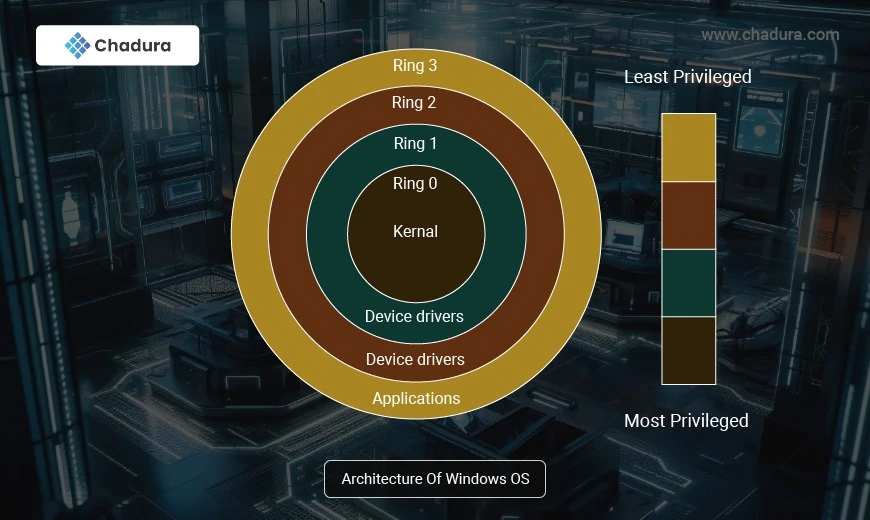
Operate system kernel: kernel is the lowest layer and acts as an interface between OS and hardware. In this architecture kernel consists of Windows kernel and low level drivers. This layer holds the highest level of privileges.
System services: The operating system interacts with drivers and kernels using system services. This consists of Windows APIs and .NET Framework. Windows API is the interface between applications and the operating system.
Apps : Apps exist in the user mode and users interact with the applications. The operating system first transforms these interactions into corresponding API calls. These API calls are then converted into system calls.
Ring-Based Protection:
The core concept is the ring-based protection model. This model divides the system into four concentric rings, each with decreasing levels of privilege as you move outwards:
Ring 0 (Kernel): The most privileged ring. It contains the kernel, which manages hardware and system resources. Access to this ring is highly restricted.
Ring 1 (Device Drivers): Contains device drivers that interact with hardware devices. They have limited access to system resources and are subject to kernel supervision.
Ring 2: Reserved for future use.
Ring 3 (Applications): The least privileged ring. This is where applications and user programs execute. They have limited access to system resources and are subject to strict security controls.
Key Architectural Principles:
Layered Design: The system is organized into distinct layers, each with specific responsibilities. This promotes modularity and maintainability.
Preemptive Multitasking: Multiple applications can run concurrently, even if one is waiting for I/O operations. This is managed by the kernel.
Virtual Memory: Each application gets its own virtual address space, isolating them from each other and preventing memory conflicts.
Security: The ring-based model and other security mechanisms (e.g., user accounts, and access control lists) protect the system from unauthorized access.
Major points of Linux and Windows Operating Systems
